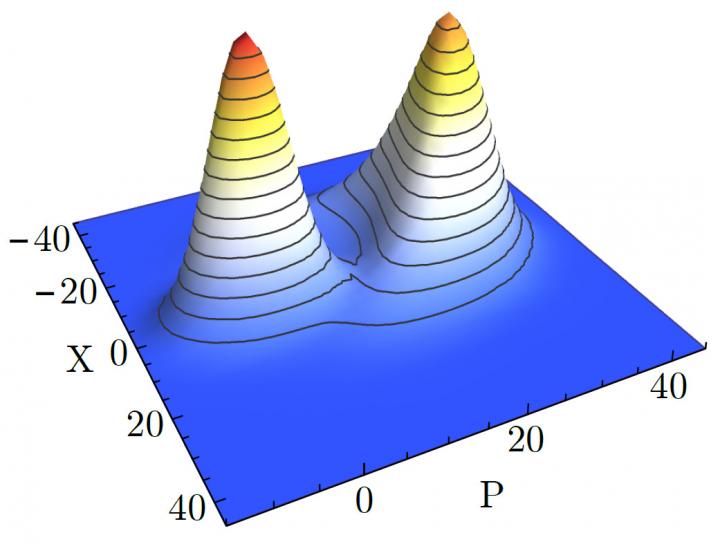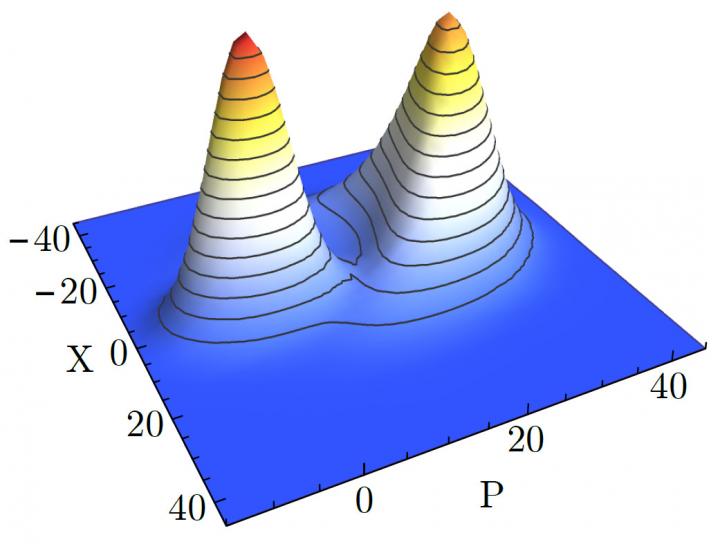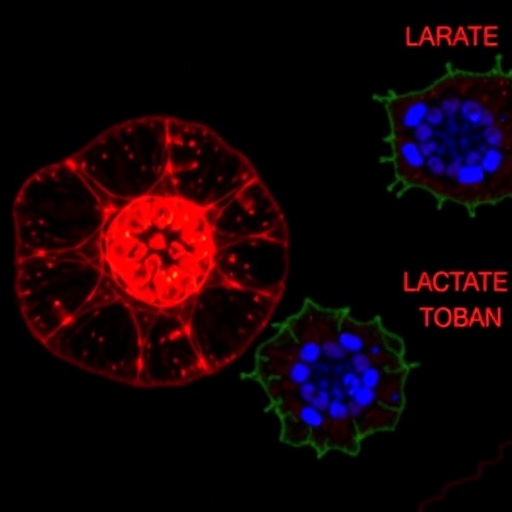
Credit: J. Fink
A group of scientists led by Johannes Fink from the Institute of Science and Technology Austria (IST Austria) reported the first experimental observation of a first-order phase transition in a dissipative quantum system. Phase transitions are something we often encounter in everyday life when we watch the change of the state of matter, for example the freezing of water at the critical temperature of 0 degrees Celsius. However, phase transitions also occur at the quantum mechanical level, where they are – in spite of their importance for various fields of physics – relatively unexplored.
One example of a phase transition at the quantum level is the photon-blockade breakdown, which was only discovered two years ago. During photon blockade, a photon fills a cavity in an optical system and prevents other photons from entering the same cavity until it leaves, hence blocking the flow of photons. But if the photon flux increases to a critical level, a quantum phase transition has been predicted to occur: The photon blockade breaks down, and the state of the system changes from opaque to transparent. This specific phase transition has now been experimentally observed by researchers who, for the first time, managed to meet the very specific conditions that are necessary to fully study this effect.
During a phase transition, the continuous tuning of an external parameter, for example temperature, leads to a transition between two robust steady states with different attributes. First-order phase transitions are characterized by a coexistence of the two stable phases when the control parameter is within a certain range close to the critical value. The two phases form a mixed-phase in which some parts have completed the transition and others have not, like in a glass in which ice and water are present at the same time. The experimental results that Fink and his collaborators will publish in the journal Physical Review X give an insight into the quantum mechanical basis of this effect in a microscopic, zero-dimensional system.
Their setup consisted of a microchip with a superconducting microwave resonator acting as the cavity and a few superconducting qubits acting as the atoms. The chip was cooled to a temperature astoundingly close to absolute zero – 0.01 Kelvin – so that thermal fluctuations did not play a role. To produce a flux of photons, the researchers then sent a continuous microwave tone to the input of the resonator on the chip. On the output side they amplified and measured the transmitted microwave flux. For certain input powers they detected a signal flipping stochastically between zero transmission and full transmission: the expected coexistence of both phases had occurred. "We have observed this random switching between opaque and transparent for the first time and in agreement with theoretical predictions," says lead author Johannes Fink from IST Austria.
Potential future applications are memory storage elements as well as processors for quantum simulation. "Our experiment took exactly 1.6 milliseconds to complete for any given input power. The corresponding numerical simulation took a couple of days on a national supercomputer cluster. This gives an idea why these systems could be useful for quantum simulations," Fink explains.
Johannes Fink came to IST Austria in 2016 to start his working group on Quantum Integrated Devices. The main objective of his group is to advance and integrate quantum technology for chip-based computation, communication, and sensing.
###
Media Contact
Elisabeth Guggenberger
[email protected]
43-022-439-000-1199
@istaustria
http://Www.ist.ac.at
############
Story Source: Materials provided by Scienmag





